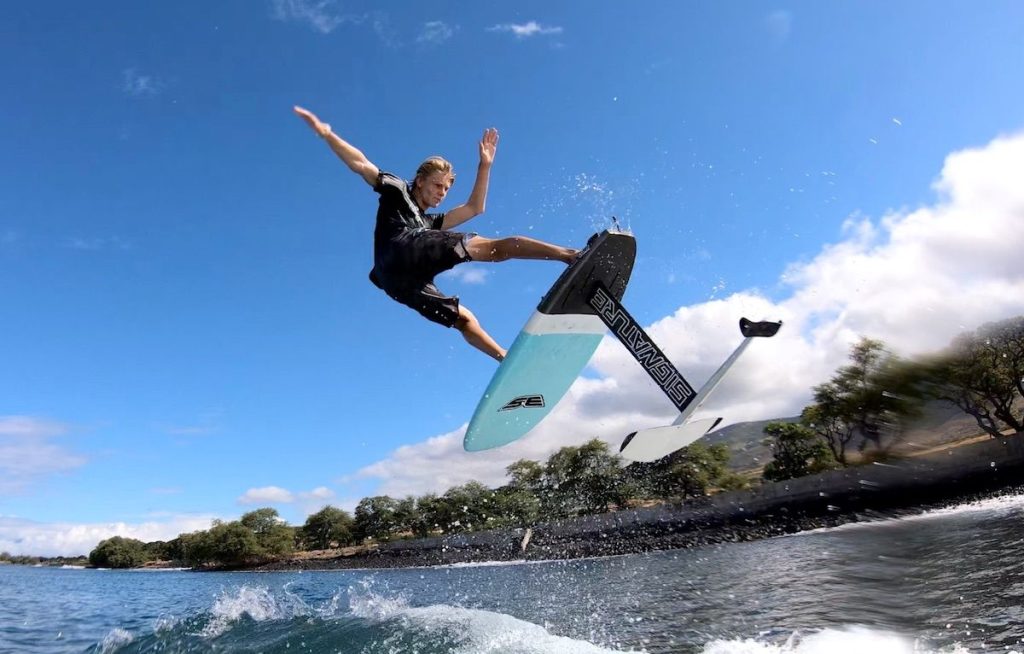In the 2000s, the surf-foil made its debut. Good ones like Laird Hamilton, Dave Kalama, and Paolo Rista are among the forerunners. Originally, it was only a means to fly above the sea in high swells while using surf-traction. In 2016, Kai Lenny blasted the number of trainers out of the water. Surfers from Hawaii, Australia, California, and Brazil quickly adopted the discipline. The stakes are getting higher and higher. Foil surfing is rapidly making its way into Europe, including France. The foil surfboard advantages include the ability to increase the number of potential sessions, the number of practicable areas, and the ability to provide novel experiences.
If you’re serious about surfing with a foil mount, don’t try to refit a standard surfboard with one. We’ve tried a variety of boards of various shapes and sizes, and you’ll be much better off with a foiling-specific board. The best are short, thick, and buoyant. A height of 5′ to 5’2″ is a reasonable starting point; anything more than that is excessive. Why? The easier it is to pump a shorter board, which is a crucial component in surf foiling. Foilers with more experience are getting down to 3’6″, but that’s a little short for a first board. A large intensity ratio is required. The larger volume will aid you when swimming into smaller, mushy waves, but the shorter length will be great once you’ve mastered them.

It’s crucial to have a low rocker.
The foil mount in the tail should be as level as possible so the board rides at the proper angle, and the nose rocker isn’t necessary because the board never needs to fit into the wave’s curve. The overall form and design are optimized for paddling. When it comes to keeping a healthy weight, staying stiff is the way to go. Regular foil surfboard have flex, but with foil, you want all of the force from pounding to be transferred towards the plastic wrap, so the boards should be somewhat stiff. You can do this by using a thicker stringer and some more glass. At the same time, you must keep the board as light as possible.
Foil’s Operating Principles
The operation of a foil surfing board is based on fluid dynamics. The water particles passing over the upper layer of the front wing speed to catch up with the hydrogen atoms passing over the bottom surface as the front wing goes ahead. The particles on the upper portion of the wing rush, causing a depression, while those on the lower portion slow down, causing an overpressure. As a result, there is an upward pulling action.












